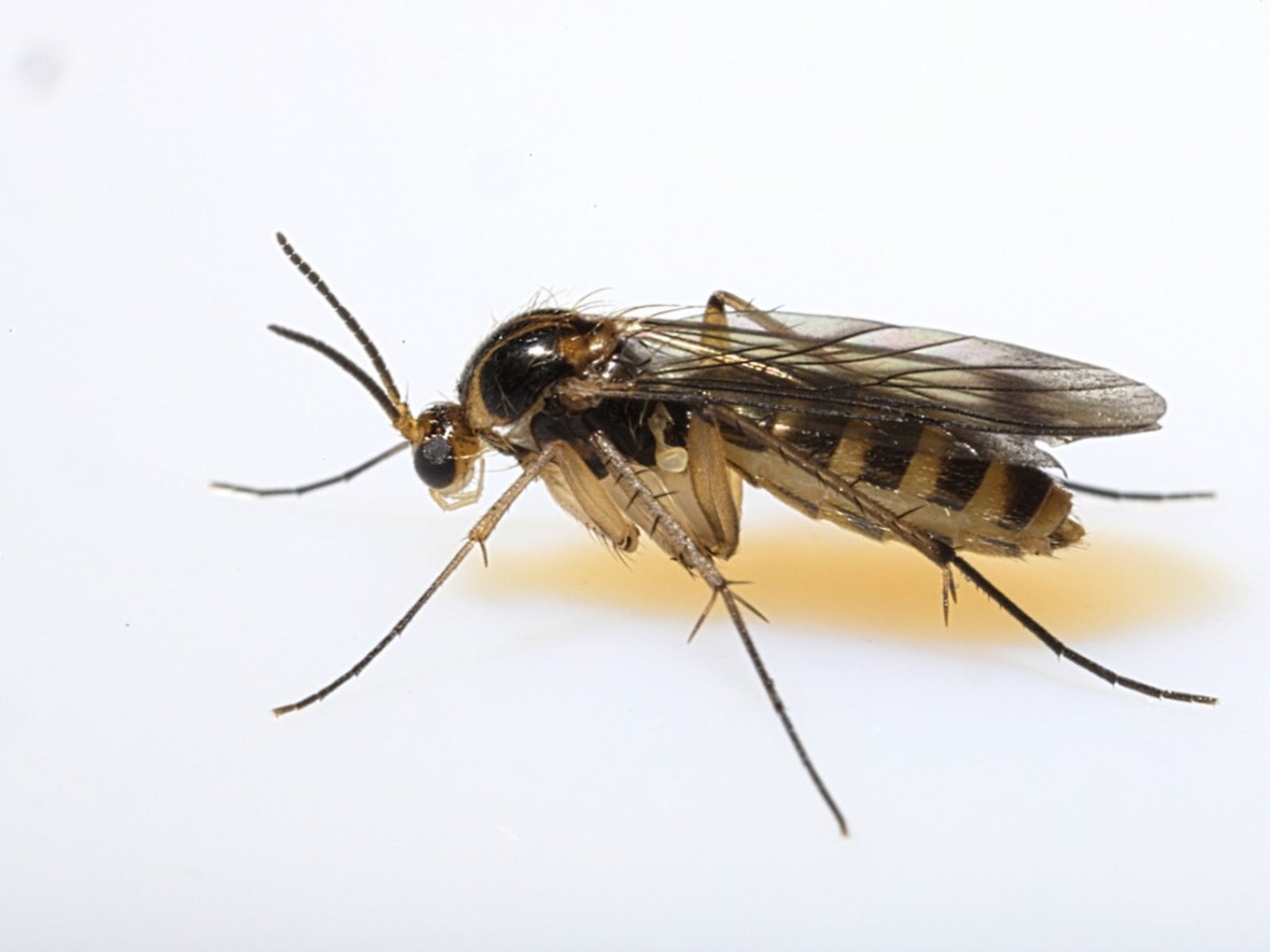Fungus Gnat Control - Fungus Gnats In Houseplant Soil


Fungus gnats, also known as soil gnats, cause very little damage to houseplants. However, certain types of fungus gnats can damage plants when the larvae feed on roots. Usually the pests are simply annoying little nuisances that buzz around potted plants.
Identifying Fungus Gnats
Fungus gnats are tiny, delicate flying insects that resemble miniature mosquitoes. They are present any time of year, but they tend to be more common in fall and winter. The pesky gnats aren't selective about when they lay eggs, which they deposit in the top 2 to 3 inches (5-8 cm.) of potting soil. One female can produce several generations of larvae in a single season. Fungus gnats are weak flyers and they usually don't stray too far from the plant. However, they can infest other plants that are located in close proximity. You may see the gnats, which are attracted to light, buzzing around light bulbs or on walls and windows near your plants.
How to Get Rid of Soil Gnats
Proper watering is the first defense against fungus gnats. Most plants should be watered deeply and allowed to drain thoroughly. Always allow the top two inches (5 cm.) of potting mix to dry between waterings. Avoid soggy potting mix; a dry environment decreases the survival of fungus gnats in houseplant soil. Be sure every pot has a drainage hole in the bottom and always empty water that drains into the drainage saucer. Yellow sticky traps—bright yellow, sticky cards about the size of an index card—usually help reduce the numbers of pests and prevent fungus gnat damage. Cut the traps into smaller pieces, then attach them to wooden or plastic sticks and insert them into the potting soil. Replace the traps when they become covered with gnats. Sticky traps are available at most garden centers. Chunks of raw potatoes serve a similar purpose. Lay a chunk of potato on the surface of the soil, then check it every couple of days. Discard gnat-infested potatoes and replace them with fresh chunks.
Additional Fungus Gnat Control
Insecticides are rarely required and toxic chemicals are discouraged for home use. Non-toxic means of control should always be your first choice. However, lower toxicity insecticides such as pyrethroid-based products or Bacillus thuringiensis israelensis, commonly known as Bti, may be effective if nothing else works. The products must be reapplied regularly because they don't provide long-term control. Use the products according to label recommendations. Store them safely out of reach of children and pets. If all else fails, the best option is to repot the plant in gnat free soil. Remove the plant from the infected soil and wash all of the soil off the roots of the plant. Wash the container that held the infected plant in a weak solution of bleach water. This will kill any eggs or larva still in the pot. Repot the plant in fresh soil and allow the soil to dry out in between watering to prevent re-infestation of the soil gnats. Fungus gnats are annoying, but once you know how to get rid of soil gnats, you can keep this pest from bothering your lovely plants.
Gardening tips, videos, info and more delivered right to your inbox!
Sign up for the Gardening Know How newsletter today and receive a free copy of our e-book "How to Grow Delicious Tomatoes".

A Credentialed Garden Writer, Mary H. Dyer was with Gardening Know How in the very beginning, publishing articles as early as 2007.
-
 4 Superfast Composting Methods: Turn Waste Into Garden Gold In 30 Days Or Less
4 Superfast Composting Methods: Turn Waste Into Garden Gold In 30 Days Or LessTry the fastest composting methods to turbocharge your pile and transform kitchen scraps and garden waste into finished compost in just a few weeks.
By Mary Ellen Ellis
-
 Best Spider Plant Soil – Complete Soil Guide And Expert Tips For Keeping Plants Happy
Best Spider Plant Soil – Complete Soil Guide And Expert Tips For Keeping Plants HappySpider plants are fun and easy plants to grow, but what is the best soil for a spider plant? Selecting the right soil is important so they can thrive.
By Bonnie L. Grant